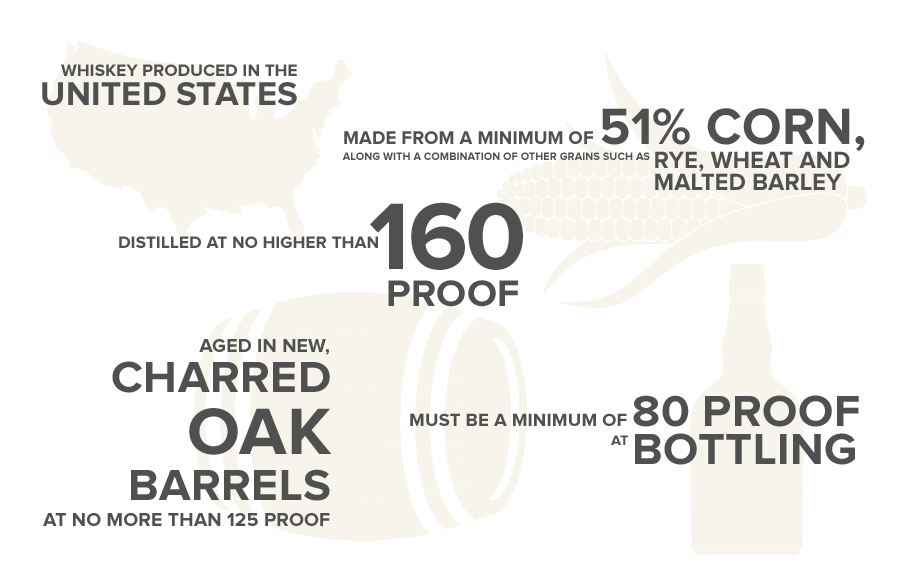What is Bourbon
What Makes Bourbon Unique
There are many factors that make bourbon whiskey a singular and distinct spirit. One of the biggest reasons bourbon stands out among other spirits is the presence of strict rules and regulations for production. Because of the safely guarded regulations of crafting bourbon, the quality, character and continuity of the spirit is maintained.
Among the standards that contribute most to bourbon’s unique qualities:
New barrels
The requirement for new charred oak barrels contribute to better aging and color characteristics. Since no artificial colorings or flavorings can be added, this requirement is instrumental in the maturation of bourbon flavor. Other types of whiskey can be aged in used barrels.
All Natural, No additives
Unlike other types of whiskeys (Canadian, Scotch, Irish), where coloring and flavor additives may be present, bourbon maintains an authentic and unadulterated profile.
Barrel Storage
Bourbon barrels are often stored on their side in ricks, which allow for airflow throughout aging warehouses. This type of storage is unique, whereas other types of whiskeys are aged on pallets or standing on the ground. It is believed that the airflow is a major differentiating factor in the bourbon craft.
Recipe
Bourbon recipes consist of at least 51% corn, which creates a sweet flavor. Other grains such as rye, wheat and malted barley are added for a more complex flavor. Other types of whiskeys might only use one grain. This is another factor in the distinct flavor characteristics of bourbon .
Aging Conditions
The temperature extremes between hot summer and cool winter seasons where bourbon is crafted contribute greatly to the aging process in bourbon whiskey. The temperature changes affect how the bourbon reacts with the oak, resulting in an accelerated aging process, relative to other whiskeys.
Straight
For bourbon to be designated “straight bourbon whiskey” it must have aged in new charred oak barrels for a period of at least two years.
Bottled In Bond
Bourbon classified as Bottled In Bond must have been made during a single distilled season at one distillery, aged in a federally bonded warehouse for a period of at least four years and bottled at 100 proof as originally defined in the Bottled-in-Bond Act of 1897. Only American whiskeys can carry the label of “Bottled in Bond,” and any such bourbon label must identify the distillery from which it was distilled and bottled.
The Rules that Bourbon Lives By

For more information about the rules and regulations of bourbon, visit the Alcohol and Tobacco Tax and Trade Bureau.
